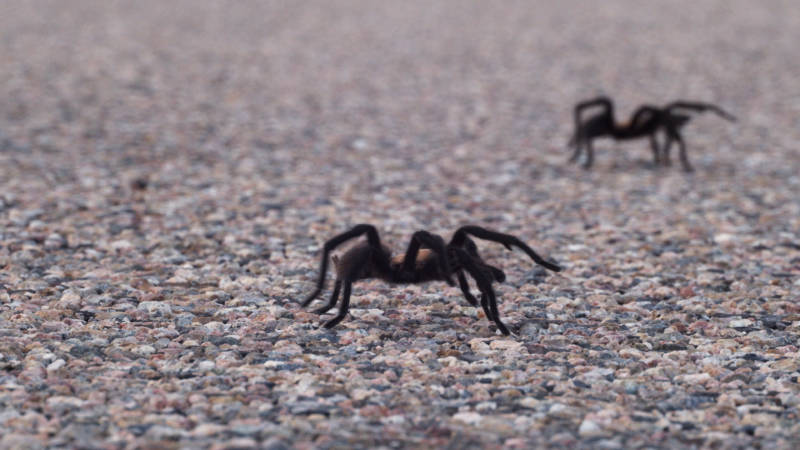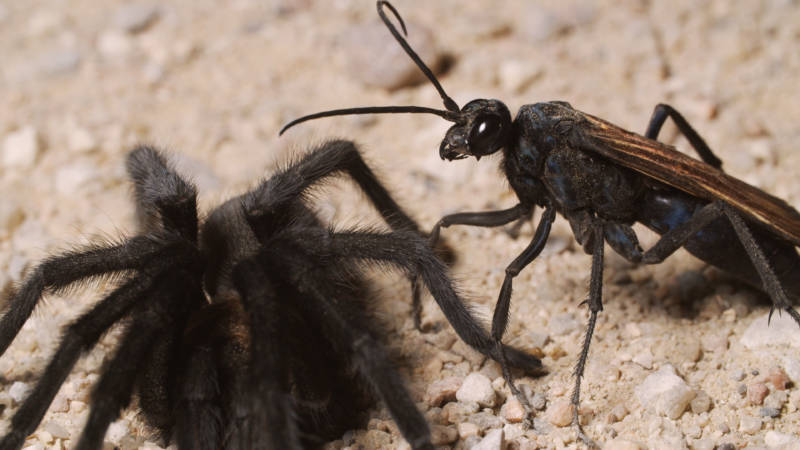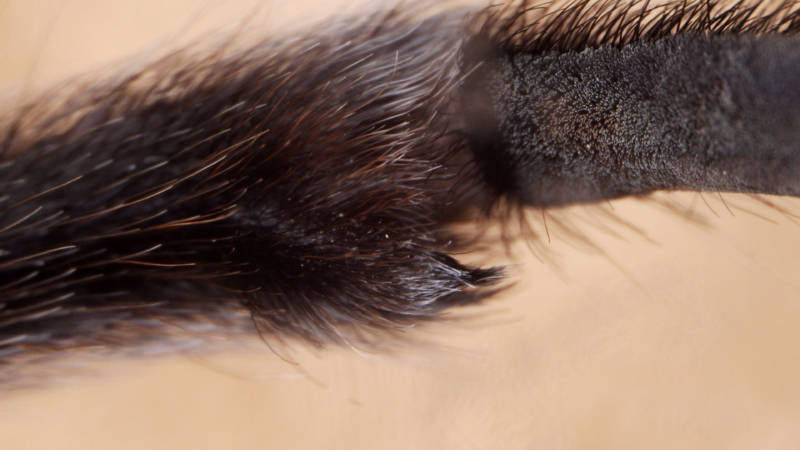Tarantulas Take Hooking Up to the Next Level
Why did the tarantula cross the road? It may sound like the setup of a joke, but it’s a very real question to anyone hoping to catch a glimpse of the annual tarantula migration in southeastern Colorado. Every September, a generation of newly mature male tarantulas leave their underground homes to wander the landscape south of La Junta to look for mates.
The local roads, some paved and some dirt, traverse a wide expanse of undeveloped prairie, the ideal place for an unobstructed view of tarantulas on the march. Town residents have even coined the term “tarantula tourism” to describe the annual swarm – of visitors. This year, they came from as far away as Texas and Michigan.
The tarantulas, which usually fit in the palm of your hand, are not aggressive, and rarely bite unless provoked. The bite itself is no more painful than a papercut.
“A decade ago, I started making a dedicated trip,” said Whitney Cranshaw, an entomology professor at Colorado State in Fort Collins. Cranshaw collects a few of the spiders every year to
use in his freshman classes. “It’s always a hit,” he added.
The lucky males will find females, who remain near their dens the whole lives, and possibly mate, fulfilling the evolutionary goal of passing on their genes. But this so‐called “migration” is
a one‐way trip.

“The lifespan of a male, once they reach adulthood, is pretty short,” said Brent Hendrixson, an arachnologist from Millsaps College in Jackson, Mississippi, who researches the spiders.
Almost all will be dead by the end of November.
“They only have a few months left until it starts getting cold down there. Winter temperatures, exposure, or predators eventually wear them out,” he said.
Among the many risks for these itinerant tarantulas, besides running out of time and becoming roadkill, are the local tarantula hawks. The two‐inch long, blue‐and‐gold wasps pounce on the unsuspecting arachnid travelers, hit them with a paralyzing sting, then drag them off to their lairs. Once there, the female wasp lays an egg on the spider that eventually hatches into a larva.

The larva burrows inside him to feast and grow before emerging from his body, Alien‐like, as an adult.
Even though the tarantulas seem to be going in a straight line, their actual path is not so linear. “There’s no rhyme or reason to the direction,” said Hendrixson, “They’re moving around randomly in their environment and coming across some sort of cue – probably silk – on the ground.” Though the final trigger is not entirely understood, males tend to court once they
come within a few feet of a female’s den.
If a male does survive long enough to find a den, he courts the female singing‐telegram style, first “knocking” at the entrance by tapping the ground with his front mouth parts, called pedipalps. He must rely on vibration to communicate his intentions, since tarantulas are mostly blind. If the larger and more dangerous female comes out to investigate, they face off at the
den entrance. She may reply with drumming of her own to indicate that she’s receptive ‐‐ or she might try to eat him.
But he’s come prepared. When male tarantulas reach maturity, right before they set out on their quest, they develop a special set of clasps on their front legs called “tibial hooks.” Tibial hooks serve a single purpose: to fasten underneath the female’s fangs during courtship, allowing him to keep danger at arm’s length, so to speak.

With the clasps locked in, he tips her body upright to expose her underbelly before he passes her his sperm. “It’s literally hooking up,” Hendrixson said.
Even when the deed is done, she may still think he’s prey, so he breaks the hook‐to‐fang contact and runs for his life.
The tarantula migration isn’t limited to this one area of Colorado. The species inhabits a swath of western territory that stretches all the way to Louisiana. In fact, the species is known colloquially as the “Texas brown tarantula,” though its common name varies from place to
place.
Most males never even find a female den in the short time they have, according to Hendrixson. As the season draws to a close, the tarantulas run out of gas. “By early November, they’re pretty ratty looking,” said Hendrixson, who’s observed dozens of migrations in his career. “They literally wear themselves to pieces by the end of the breeding season.”
The spiders Cranshaw collects fare slightly better. “The mature males I collect typically die by December, which is longer than they survive outdoors,” he said. He gives them to students to care for as pets. “It helps generate healthy discussions about spiders.”
.
